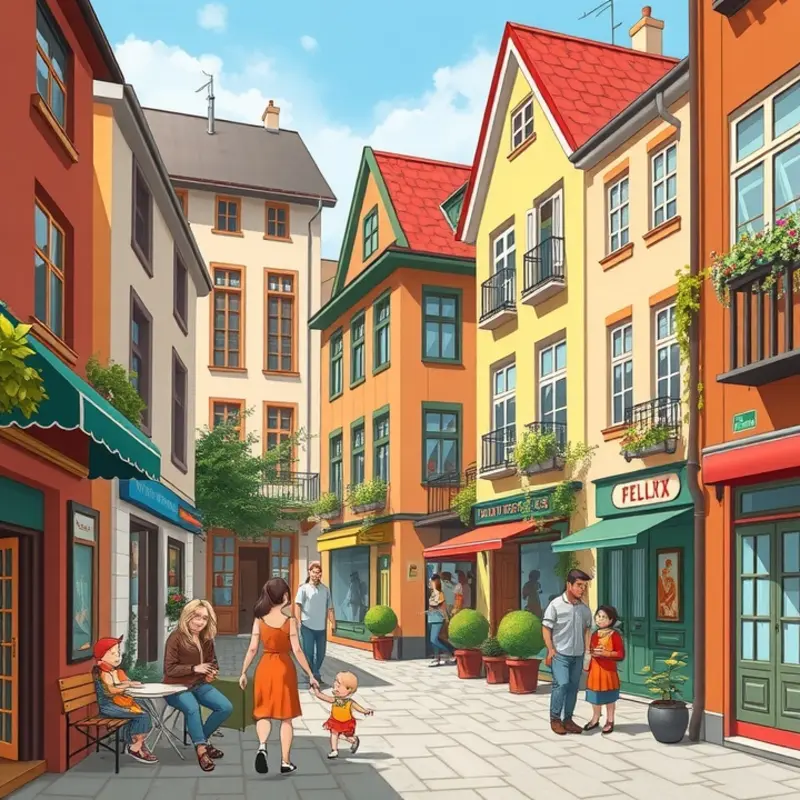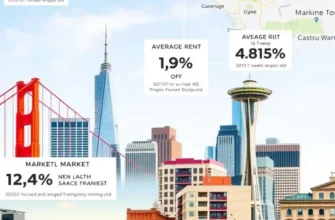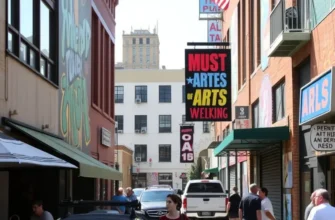Relocating to a new city can be both an exciting and overwhelming journey, particularly for young professionals, students, couples, families, and mobile professionals. The landscape of rental markets throughout multicultural cities in the U.S. presents unique opportunities and challenges. Each city brings its cultural blend, neighborhood dynamics, and rental practices. Whether you’re looking for a cozy studio or a spacious family home, understanding the nuances of the local market is crucial to making the right choice. This guide aims to equip you with practical insights and tips tailored to major U.S. cities known for their rich diversity. You will not only discover how to navigate the rental market but also get a glimpse of the lifestyle each city offers, from vibrant neighborhoods to vital amenities.
Understanding Multicultural Neighborhoods

Living in multicultural neighborhoods opens your world to a rich tapestry of cultures, experiences, and traditions. Cities like San Francisco, New York, and Los Angeles boast neighborhoods that celebrate diversity and provide distinct opportunities for exploring cultural heritage.
San Francisco is famous for areas like Chinatown and the Mission District, where you can immerse yourself in Chinese and Latinx cultures. In New York, neighborhoods such as Jackson Heights and Harlem offer vibrancy from Indian, Central American, and African-American communities. Los Angeles features Little Tokyo and Boyle Heights, allowing residents to engage with Japanese and Mexican cultures.
Choosing the Right Fit
Selecting a neighborhood that aligns with your lifestyle is crucial. Are you drawn to cultural hubs, family-friendly areas, or professional districts? Cultural hubs generally offer a wide array of authentic foods, arts, and festivals. These areas are perfect for those who thrive in energetic, inclusive environments.
If you’re focused on family-friendly zones, look for neighborhoods with good schools, parks, and community centers. Family-oriented areas often have amenities and services that cater to children, providing a safe and nurturing environment.
Professional districts are ideal for career-focused individuals. Proximity to business centers, public transport, and co-working spaces can significantly enhance your daily routine. These areas may offer quieter settings and modern accommodations, appealing to those prioritizing work-life balance.
Community Engagement for a Richer Experience
Participating in community events boosts your sense of belonging. Joining local clubs, attending neighborhood meetings, or volunteering can open avenues for interaction and understanding. Becoming an active community member helps build relationships and allows you to contribute positively to your surroundings.
Public spaces like community gardens, libraries, and cultural festivals are excellent venues for the community to come together. They foster inclusivity and allow you to learn and celebrate the beautiful diversity around you.
For those new to managing the dynamics of multicultural settings, consider tips from the Apartment Organization Baskets guide. It offers practical ways to create harmonious living spaces, helping you adjust to your new neighborhood effortlessly.
Navigating multicultural neighborhoods requires a balance of curiosity and respect. A genuine interest in your surroundings, along with an appreciation for diverse perspectives, not only enriches your personal life but also strengthens the community tapestry.
Finding the Right Rental: Tips and Resources

Multicultural cities offer unique opportunities and challenges when searching for a rental. Embracing technology can significantly streamline the process. Online rental platforms provide virtual tours and maps of diverse neighborhoods. Use filters to select properties that meet your specific needs, such as pet-friendly or proximity to public transport.
Local resources are invaluable in the rental search. Community boards and local newspapers often list properties that may not appear online. Additionally, landlords in multicultural areas may prefer traditional listings, knowing they attract long-term tenants.
Community engagement is crucial. Ethnic community centers and cultural organizations often have bulletin boards or newsletters with rental listings. Sharing your housing needs at events can uncover hidden opportunities through word-of-mouth.
When evaluating potential rentals, focus on critical factors beyond the property size and cost. Consider cultural aspects such as nearby grocery stores stocking familiar ingredients or education centers offering language classes. Walk around the neighborhood at different times to gauge its atmosphere and vibe.
Understanding the lease agreement is vital. These legal documents outline landlord-tenant responsibilities. Always read the lease thoroughly, ensuring clarity on all terms. Look out for clauses regarding pet policies, maintenance responsibilities, and any additional fees.
Negotiating rent or terms can be daunting, but it’s often possible, especially in diverse urban markets. Research average rental prices in your desired area to support negotiations. Be prepared to discuss potential compromises, like signing a longer lease for lower rent.
While moving to a new apartment, being mindful of move-in essentials can ease the transition. Consider exploring essential tips on settling into your new place. These can ensure you’re fully prepared for your new home.
Navigating rentals in multicultural cities requires a blend of technology, local intelligence, and community engagement. With these strategies, finding the right rental that caters to your lifestyle and cultural needs becomes a fulfilling experience.
Final words
Finding the ideal rental in a multicultural city is an adventure that goes beyond leasing. By understanding the unique characteristics of neighborhoods and utilizing the right resources, you can make informed decisions that enhance your living experience. Whether you’re drawn to the arts, culinary delights, or community events, each rental journey offers the chance to immerse yourself in the local culture. Remember, your new home is not just about the apartment—it’s about embracing a new lifestyle in a vibrant community.









